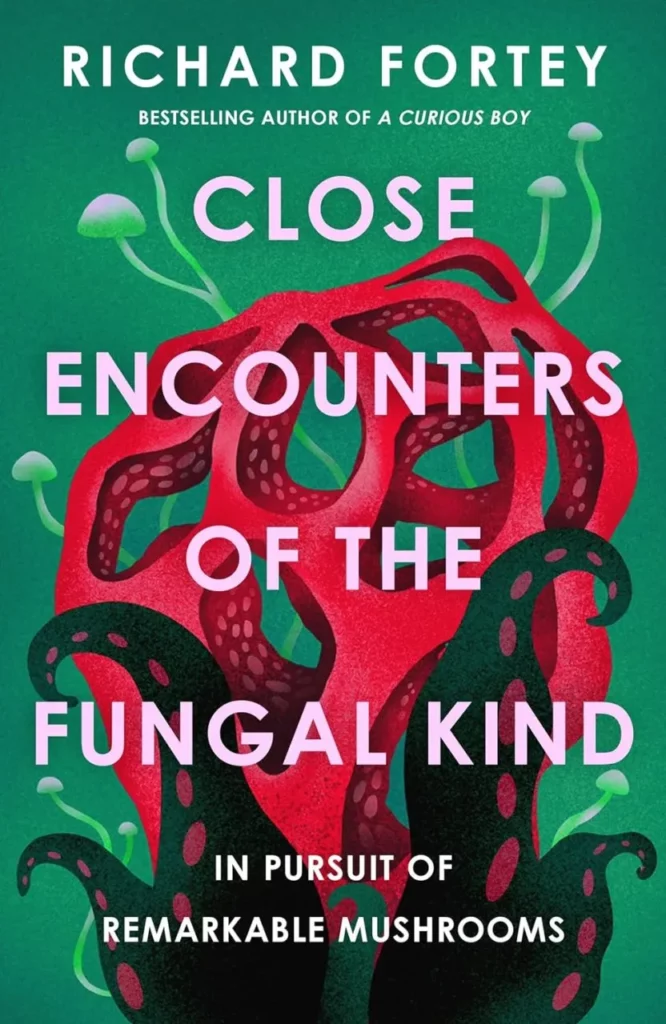Richard Fortey was a professional geologist at the Natural History Museum and a world authority on trilobite fossils. Now in retirement he has written a series of very readable books on aspects of natural history as well as presenting television programmes, one of which was The Magic of Mushrooms. He is, in fact, one of our leading amateur mycologists, and has been fascinated by fungi since boyhood. This is his fungal autobiography, the fruits of a lifelong pursuit of strange and wonderful mushrooms.
When I was myself keen on fungi, this is the book I longed for: engaging, enthusiastic, and very well informed. It is one man’s close encounters (very close, for many fungi need a lens to identify, if not a microscope) with the tribe, mainly in Britain but also as far afield as Arizona or Australia. It runs through the panoply of fungi arranged by what they do: collaborators (that is, mycorrhizal species), stinkers, parasites, puffers, rotters, blowers, and mushrooms that shine in the dark. And where you find them: ‘things on sticks’, ‘fielders’ (waxcaps and company, churchyards a speciality), and a whole chapter near the beginning devoted to the succession of fungi on a single rotting log.
Like most of us, Fortey loves the bizarre. He describes in loving detail fungi that feed on worms, with the help of hideous microscopic stickers and lassoes. There are vampire fungi that turn flies and caterpillars into zombies and spring triumphantly from their broken bodies. There are mushroom parasites that take over the bodies of their fungal host or piggyback on their caps. The fungal way of life is distinct from that of animals or plants. It involves partnerships and information exchange by way of wood wide webs. Even sex is different: fungi do not have males and females; compatible mating types are dubbed pluses (+) and minuses (–).
Fortey does not just foray after fungi. As a scientist, he has done his share of survey and original research. He discovered what was thought to be a new species, growing on a rotting stem of burdock, but, unfortunately, after a lot of work, it was not. The full story, in a chapter titled ‘Mea culpa’, demonstrates just how hard it is to establish whether a species is really new. He reared fungus gnats for the relevant expert (possibly the only expert) to identify; there are at least 500 of them. And he has hunted rare fungi with names like Sandy Stiltball, Piggyback Rosegill and Powdercap Strangler (n.b., common names are currently more stable than scientific ones). He enjoys eating them too; the first chapter is based in a trattoria in an Italian village that holds a porcini festival each year (porcini is the Pennybun Bolete, known in different countries as cepe, steinpilz, sopp or borowiki).
It is the personal element that makes all this so readable. Fortey’s style is warm, engaging and friendly. He does not over-simplify, but does not use jargon either, and any naturalist would enjoy this narrative of the dark kingdom and its pleasures. To help, there are two banks of colour plates illustrating some of the stars. As someone has already noted, reading Fortey is to learn a lot without really trying. He is the Bill Bryson of British natural history.


